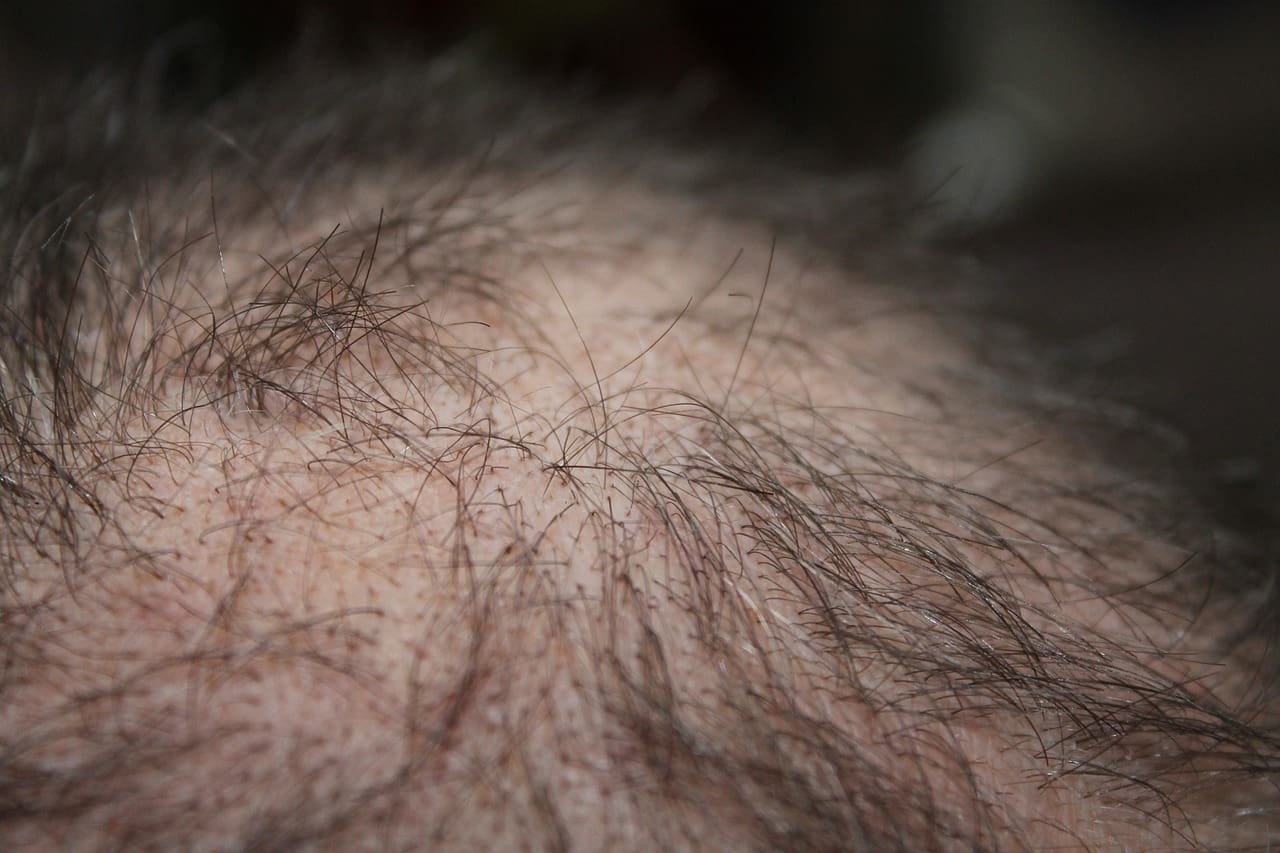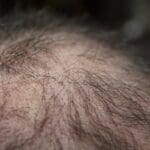Hair Loss: Accepting the Unchangeable, Changing the Rest
This article delves into the emotional journey of accepting hair loss and offers valuable insights on how to embrace one’s appearance. It also sheds light on the diverse treatment options available for individuals experiencing hair loss.
Understanding Hair Loss
When it comes to hair loss, there are several factors that can contribute to this common issue. Understanding the causes of hair loss is the first step in finding effective solutions. Genetics, hormonal changes, and medical conditions all play a role in this process.
Genetics can be a major factor in determining whether or not you will experience hair loss. If your parents or grandparents have a history of hair loss, it is likely that you may also be predisposed to this condition. This is known as male or female pattern baldness, and it can start as early as your twenties.
Hormonal changes can also have a significant impact on hair growth. For example, during pregnancy, many women experience thicker and fuller hair due to increased levels of estrogen. However, after giving birth, hormone levels fluctuate, and this can lead to temporary hair loss known as postpartum hair shedding.
In addition to genetics and hormonal changes, certain medical conditions can also contribute to hair loss. Conditions such as alopecia areata, thyroid disorders, and scalp infections can all cause hair loss. Understanding the underlying medical condition is crucial in determining the appropriate treatment options.
By understanding the different causes of hair loss, including genetics, hormonal changes, and medical conditions, you can gain insight into how each factor can affect hair growth and contribute to hair loss. This knowledge will empower you to make informed decisions about treatment options and take proactive steps towards managing hair loss.
Embracing Your Appearance
In the face of hair loss, it is essential to find practical advice on accepting and loving yourself just the way you are. While it may be challenging at times, there are various self-care practices that can help boost your self-confidence and redefine beauty standards.
One powerful self-care practice is mindfulness. By being present in the moment and accepting yourself without judgment, you can cultivate a sense of inner peace and acceptance. Mindfulness allows you to focus on the positive aspects of your appearance and appreciate your unique qualities beyond the presence or absence of hair.
Positive affirmations are another effective tool in embracing your appearance. By repeating positive statements about yourself and your appearance, you can rewire your thoughts and beliefs, boosting your self-esteem. For example, you can affirm, “I am beautiful just the way I am, hair loss does not define me.”
It is important to remember that beauty comes in many forms and is not solely determined by outward appearance. Embracing your appearance means recognizing and celebrating your inner beauty, resilience, and strength. By shifting your focus from external validation to self-acceptance, you can redefine beauty standards and cultivate a positive body image.
Additionally, surrounding yourself with a supportive community can make a significant difference in accepting your appearance. Seek out friends, family, or support groups who understand your journey and can provide encouragement and empathy. Sharing your experiences and connecting with others who have similar struggles can be empowering and provide a sense of belonging.
In conclusion, embracing your appearance despite hair loss is a journey of self-discovery and self-acceptance. Through self-care practices like mindfulness and positive affirmations, you can boost your self-confidence and redefine beauty standards. Remember, you are beautiful just the way you are, and hair loss does not define your worth or beauty.
Support Systems
Dealing with hair loss can be an emotional journey, and having a strong support system in place can make a world of difference. It is important to surround yourself with people who understand and empathize with your experience. Building a support system can provide you with the emotional support and encouragement you need to navigate this challenging time.
One way to start building a support system is by communicating your feelings to your loved ones. Sharing your concerns and fears with trusted family members and friends can help alleviate some of the emotional burden you may be carrying. They can offer a listening ear, provide comfort, and remind you that you are not alone in this journey.
In addition to seeking support from loved ones, it can also be beneficial to explore professional help. Therapy or support groups specifically tailored to individuals dealing with hair loss can provide a safe space to express your emotions, learn coping strategies, and connect with others who are going through similar experiences. These resources can offer valuable insights and guidance on how to navigate the emotional challenges that come with hair loss.
Remember, seeking support is not a sign of weakness but rather a sign of strength. It takes courage to reach out and ask for help. By building a strong support system, you are creating a foundation of understanding and compassion that can help you on your journey towards acceptance and self-love.
Sharing Your Story
Explore the power of sharing your hair loss journey with others. Discover online communities and resources where you can connect with individuals who have similar experiences and find inspiration.
Sharing your hair loss journey can be a powerful and transformative experience. By opening up about your struggles and triumphs, you not only gain a sense of relief, but you also create a space for others to share their own stories. This sense of community and understanding can be incredibly empowering.
One way to connect with others who have similar experiences is through online communities and resources. There are numerous websites, forums, and social media groups dedicated to hair loss, where individuals from all walks of life come together to offer support, advice, and encouragement. These platforms provide a safe space to share your story, ask questions, and receive valuable insights from others who have been through similar challenges.
Through these online communities, you can find inspiration and motivation to embrace your hair loss journey. Seeing others who have embraced their appearance and found confidence can be incredibly uplifting and help shift your perspective. It’s important to remember that you are not alone in this journey, and there are people out there who understand and can offer support.
In addition to online communities, there are also resources available that provide valuable information and guidance on coping with hair loss. Books, blogs, and podcasts can offer insights, tips, and personal stories that can help you navigate the emotional and practical aspects of hair loss. These resources can be a source of comfort and inspiration as you continue on your journey of self-acceptance and self-love.
Remember, sharing your story is not only a way to heal and find support, but it can also inspire others to embrace their own unique beauty. By being open and vulnerable, you can create a ripple effect of positivity and empowerment, helping others along their own hair loss journey.
Alternative Hairstyles and Accessories
When dealing with hair loss, it’s important to remember that there are numerous alternative hairstyles and accessories that can help enhance your appearance and boost your confidence. Embracing your new look doesn’t mean you have to settle for a limited range of options. In fact, this is the perfect opportunity to get creative and experiment with different styles and accessories that reflect your personal style.
One popular option is wearing wigs. Wigs come in a variety of styles, colors, and lengths, allowing you to switch up your look whenever you feel like it. Whether you want to go for a natural-looking wig that mimics your original hair or try something completely different, wigs offer endless possibilities for styling and self-expression.
Scarves and hats are also great accessories to consider. Not only do they provide coverage for your scalp, but they can also be stylish and fashionable. Scarves can be tied in various ways, allowing you to create different looks that suit your mood and outfit. Hats, on the other hand, offer both protection from the sun and a chance to showcase your personal style. From trendy baseball caps to elegant wide-brimmed hats, there’s something for everyone.
If you’re looking for a more subtle option, hairpieces and extensions can be a game-changer. These accessories can be seamlessly integrated into your existing hair, adding volume and length. They offer a natural-looking solution that allows you to experiment with different hairstyles and boost your confidence.
Lastly, consider exploring camouflage products specifically designed for hair loss. These products can help conceal thinning areas or bald patches, giving the illusion of fuller hair. From powders to sprays, there are various options available to match your hair color and provide a natural-looking coverage.
Remember, embracing alternative hairstyles and accessories is all about finding what works best for you and makes you feel confident. Don’t be afraid to experiment and try new things. Your hair loss journey can be an opportunity for self-expression and embracing your unique style.
Treatment Options
When it comes to addressing hair loss, there are several treatment options available that can help you regain confidence and promote hair growth. It’s important to explore these options and consider their effectiveness, potential side effects, and other factors before making a decision.
1. Medications:
Medications are a common treatment for hair loss and can help slow down the progression of hair loss and stimulate hair growth. Two popular medications for hair loss are minoxidil and finasteride. Minoxidil is available as a topical solution and is applied directly to the scalp, while finasteride is taken orally as a pill. These medications work by increasing blood flow to the hair follicles and blocking the hormone responsible for hair loss. It’s important to consult with a healthcare professional before starting any medication to understand the potential side effects and determine if it’s the right option for you.
2. Hair Transplants:
Hair transplants are a surgical procedure that involves taking hair follicles from one part of the body, typically the back or sides of the head, and transplanting them to the balding areas. This procedure is effective in restoring hair growth in areas of thinning or baldness. However, it’s important to note that hair transplants can be expensive and may require multiple sessions to achieve desired results. It’s essential to consult with a qualified surgeon to discuss the procedure, potential risks, and expected outcomes.
3. Laser Therapy:
Laser therapy is a non-invasive treatment option that uses low-level laser light to stimulate hair growth. This therapy is thought to increase blood flow to the hair follicles, promoting hair growth and improving the overall health of the scalp. Laser therapy can be performed at home using handheld devices or in clinics using more advanced equipment. It’s important to note that laser therapy may require consistent and long-term use to see noticeable results. Consulting with a healthcare professional can help determine if laser therapy is a suitable option for your specific hair loss situation.
When considering treatment options for hair loss, it’s essential to weigh the effectiveness, potential side effects, and cost associated with each option. Additionally, factors such as the underlying cause of hair loss, individual preferences, and overall health should be taken into consideration. Consulting with healthcare professionals, such as dermatologists or trichologists, can provide valuable insights and guidance to help you make an informed decision.
Self-Care Strategies
When dealing with hair loss, it is crucial to prioritize self-care strategies that promote overall well-being. Taking care of yourself not only helps you cope with the emotional challenges of hair loss but also contributes to your overall health and happiness. Here are some practical tips to consider:
- Maintain a healthy lifestyle: Eating a balanced diet rich in vitamins and minerals can support hair health. Incorporate foods like fruits, vegetables, lean proteins, and whole grains into your meals. Stay hydrated by drinking an adequate amount of water daily.
- Manage stress: Stress can exacerbate hair loss, so it’s essential to find healthy ways to manage stress levels. Engage in activities that help you relax and unwind, such as meditation, yoga, or deep breathing exercises. Prioritize self-care activities that bring you joy and help reduce stress.
- Seek professional help: If you’re struggling with the emotional impact of hair loss, don’t hesitate to seek professional help. A therapist or counselor can provide support and guidance as you navigate this challenging experience. They can help you develop coping mechanisms and strategies to build resilience.
Remember, taking care of yourself goes beyond physical appearance. It’s about nourishing your mind, body, and soul. By adopting these self-care strategies, you can enhance your well-being and embrace your unique beauty, regardless of hair loss.
Healthy Hair Habits
When it comes to maintaining healthy hair, adopting essential hair care practices is crucial. Not only do these practices promote hair growth, but they also help in maintaining the overall health of your existing hair. By following a few simple tips on washing, conditioning, and styling techniques, you can minimize further damage and ensure that your hair remains strong and vibrant.
1. Proper Washing:
Start by choosing a gentle shampoo that suits your hair type. Avoid using hot water as it can strip away natural oils, leaving your hair dry and brittle. Instead, opt for lukewarm water to wash your hair. Massage the shampoo into your scalp using your fingertips, focusing on the roots. Rinse thoroughly to remove all traces of shampoo.
2. Conditioning:
Conditioning is an essential step in maintaining healthy hair. After shampooing, apply a conditioner from mid-length to the ends of your hair. Leave it on for a few minutes to allow it to penetrate the hair shaft. Rinse thoroughly with cool water to seal the cuticles and add shine.
3. Styling Techniques:
When it comes to styling your hair, it’s important to minimize the use of heat tools such as straighteners and curling irons. Excessive heat can damage your hair and lead to breakage. Instead, opt for heat-free styling methods like air-drying or using rollers. If you do use heat tools, make sure to apply a heat protectant spray beforehand to minimize damage.
4. Minimize Chemical Treatments:
Chemical treatments such as perming, relaxing, or coloring can weaken your hair and make it more prone to breakage. If possible, try to minimize the use of these treatments or opt for gentler alternatives. If you do choose to color your hair, make sure to use products specifically designed for color-treated hair and follow the instructions carefully.
5. Protect Your Hair:
Protecting your hair from environmental damage is crucial for maintaining its health. When going out in the sun, wear a hat or use a scarf to shield your hair from harmful UV rays. Similarly, when swimming in chlorinated pools or the ocean, rinse your hair thoroughly afterward to remove any residue that can cause damage.
By incorporating these healthy hair habits into your routine, you can promote hair growth and maintain the health of your existing hair. Remember, consistency is key, so make these practices a part of your daily hair care routine for long-lasting results.
Exploring Hair Alternatives
When it comes to addressing hair loss, there are non-medical alternatives that can help you regain your confidence and enhance your appearance. Hairpieces, extensions, and camouflage products are some of the options available to explore.
Hairpieces: Hairpieces, also known as wigs or toupees, are a popular choice for individuals experiencing hair loss. They come in various styles, colors, and materials to suit different preferences. Whether you prefer synthetic or human hair, there are options to match your desired look. Hairpieces can be easily attached to your existing hair or worn as a full cap, providing a natural and seamless appearance.
Extensions: Hair extensions are another alternative that can add volume and length to your hair. They are attached to your natural hair using various methods, such as bonding, clipping, or sewing. Extensions can be made from synthetic or human hair and can be styled just like your own hair. They offer versatility and the ability to experiment with different hairstyles, giving you the opportunity to express your personal style.
Camouflage Products: Camouflage products, such as hair fibers or sprays, are designed to conceal thinning areas or bald patches. These products use microfibers that adhere to your existing hair, creating the illusion of fuller hair. They come in different shades to match your hair color and can be easily applied and blended for a natural look. Camouflage products are a quick and temporary solution that can instantly boost your confidence.
By exploring these non-medical alternatives, you can find a solution that suits your needs and helps you feel more comfortable with your appearance. Whether you choose a hairpiece, extensions, or camouflage products, remember that the most important thing is to embrace your unique beauty and feel confident in your own skin.
Frequently Asked Questions
- What are the common causes of hair loss?
Hair loss can be caused by various factors, including genetics, hormonal changes, medical conditions, and certain medications. It is important to consult with a healthcare professional to determine the underlying cause of your hair loss.
- Are there any effective treatments for hair loss?
Yes, there are several treatment options available for hair loss. These include medications, such as minoxidil and finasteride, which can help stimulate hair growth. Hair transplants and laser therapy are also effective methods for restoring hair. Consult with a healthcare professional to determine the most suitable treatment option for your specific condition.
- Can hair loss be prevented?
While some forms of hair loss cannot be prevented, adopting healthy hair care practices can help maintain the health of your existing hair. This includes regular washing and conditioning, avoiding excessive heat styling, and protecting your hair from harsh chemicals and environmental damage.
- How can I boost my self-confidence despite hair loss?
Embracing your appearance and practicing self-care can significantly boost your self-confidence. Engaging in mindfulness exercises, practicing positive affirmations, and seeking support from loved ones or support groups can help you redefine beauty standards and feel more confident in your own skin.
- Are there alternative hairstyles and accessories that can help?
Absolutely! There are various alternative hairstyles and accessories that can enhance your appearance and provide you with different styling options. Wigs, scarves, hats, and hairpieces are popular choices that can help you express your personal style and feel confident.
- Where can I find support and resources for dealing with hair loss?
There are online communities, support groups, and resources available where you can connect with individuals who have similar experiences. Sharing your hair loss journey can be empowering and provide inspiration. Additionally, seeking professional help, such as therapy, can also be beneficial in navigating the emotional aspects of hair loss.








Leave a Reply